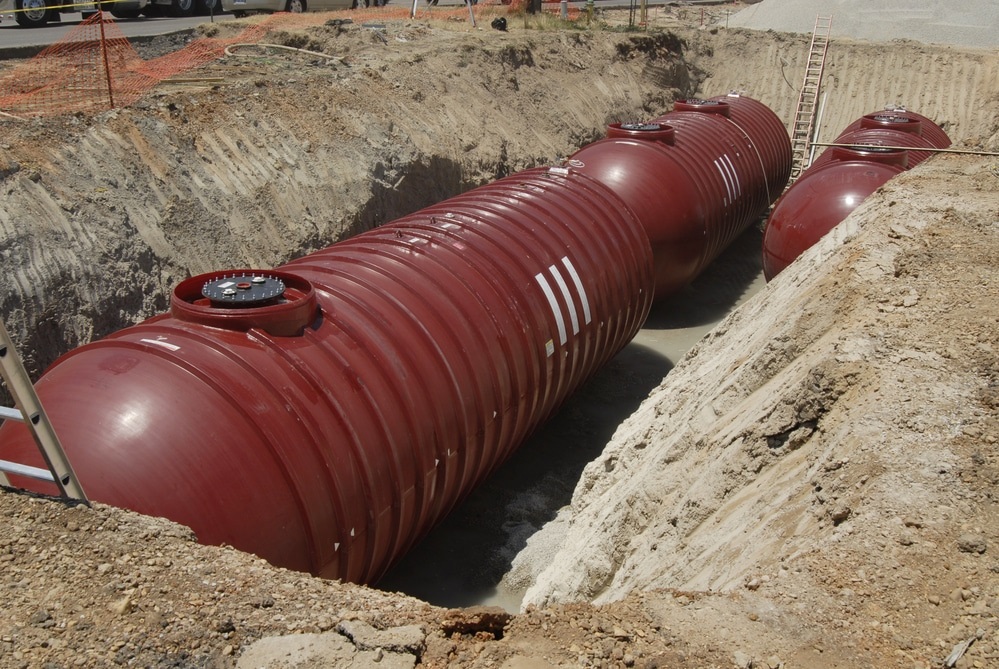Underground storage tank testing is a vital part of maintaining compliance and safety when dealing with fuel or hazardous chemical storage. But what happens when your tank fails the test? It’s not just about fixing the issue—it’s about knowing exactly what steps to take to protect your facility, avoid penalties, and keep operations running smoothly.
Let’s break down what a failed inspection really means, what you should do immediately, how to evaluate your repair vs. replacement options, and how to stay on the right side of the law—all while keeping future failures off your radar.
What Just Happened? Understanding Why Underground Storage Tanks Fail
Before jumping into action, you need to understand what triggered the failure. Here are the most common culprits behind UST testing failures:
-
Corrosion of Tank Walls or Piping: Time is not kind to metal. Corrosion is the leading cause of structural failure in steel tanks and associated lines, especially those without proper cathodic protection.
-
Product Leaks from Fittings or Valves: Loose or degraded fittings, gaskets, and valves can result in slow leaks that compromise your system.
-
Damaged Leak Detection Systems: If sensors or monitoring systems fail, they may give false positives—or worse, miss an actual leak.
-
Tank Lining Deterioration: Internal linings meant to prevent corrosion can degrade, especially in older tanks, exposing the metal underneath.
-
Improper Installation or Upgrades: A flawed installation process or poorly executed modifications can affect tank integrity, leading to early failure.
-
Shifting Ground or Settling: Natural shifts in the earth beneath your tank can stress joints and cause structural damage over time.
Understanding the root cause helps determine whether your next move involves a simple patch or a complete system overhaul.
Now that we’ve identified the common triggers, it’s time to act fast.
Red Alert Mode: Immediate Actions to Take After a Failed Inspection
When a tank fails underground storage tank testing, response time is critical. Here’s what to do the moment you receive that dreaded fail notice:
-
Stop Dispensing Immediately: Cease all operations involving the affected tank to prevent potential environmental contamination.
-
Notify the Authorities: Depending on your state, you may have just hours to report a suspected leak or failure. Don’t delay—noncompliance here can lead to major fines.
-
Confirm the Failure: Engage a certified technician to verify the test results and identify exactly where and why the tank failed.
-
Assess the Extent of the Problem: Determine whether the failure is isolated (e.g., a pipe joint) or systemic (e.g., widespread corrosion).
-
Secure the Site: Make sure your team follows proper safety procedures to contain any leaks and prevent hazards during the investigation.
-
Document Everything: Keep detailed logs of the test results, repair actions, communications, and anything else related to the incident.
By taking swift and strategic steps, you can control the situation, minimize downtime, and avoid making a bad situation worse.
Fix It or Scrap It? Choosing Between Repair and Replacement
Once you understand the scope of the issue, you’re faced with a big decision: repair the tank or replace it entirely? Here’s how to weigh your options:
-
Age of the Tank: Tanks over 20 years old—especially unlined or unprotected steel tanks—are more likely to suffer from irreversible damage.
-
Severity of Damage: Surface-level corrosion might be repairable, but structural integrity issues often signal the need for replacement.
-
Frequency of Past Issues: If this isn’t your first failed test, it might be time to cut your losses and upgrade.
-
Cost Comparison: While repairs are cheaper upfront, frequent maintenance costs add up. A new tank might be the smarter investment long term.
-
Downtime Impact: Consider how much downtime repairs will require vs. the installation of a new system.
-
Regulatory Pressure: Some jurisdictions mandate replacement if tanks fail under specific conditions, such as continuous leaks or multiple test failures.
When in doubt, consult a licensed UST contractor. They’ll help you weigh the pros and cons based on your system, budget, and future compliance needs.
Don’t Mess Around: Legal and Compliance Rules You Need to Know
A failed UST test isn’t just a technical hiccup—it’s a regulatory minefield. Here’s how to stay on the right side of the law:
-
Report Promptly: Most states require you to report suspected leaks or confirmed failures within 24 hours—or as little as two hours in some areas.
-
File a Corrective Action Plan (CAP): You may be required to submit a formal plan outlining how you’ll fix or replace the tank and ensure future compliance.
-
Use Licensed Contractors Only: All inspections, repairs, and replacements must be performed by certified professionals in accordance with federal and state regulations.
-
Comply with EPA Standards: The EPA’s 40 CFR Part 280 details the minimum requirements for UST systems. Violating these can result in civil penalties of up to $11,000 per day.
-
Keep Your Records in Order: Store inspection reports, maintenance logs, and correspondence with authorities for at least three years—some states require longer.
-
Prepare for Follow-up Inspections: After corrective actions, expect additional inspections to verify that your tank is safe and compliant.
Compliance isn’t optional—it’s a fundamental part of managing any underground storage system. Treat it as part of your risk management strategy.
Playing the Long Game: How to Prevent Future Tank Testing Failures
Want to avoid the stress of a failed UST inspection next year? Then it’s all about proactive maintenance and best practices:
-
Schedule Annual Inspections: Don’t wait for something to go wrong. Annual checks help catch small issues before they become major failures.
-
Install Cathodic Protection Systems: Especially for metal tanks, these systems protect against corrosion and can significantly extend the tank’s life.
-
Maintain Leak Detection Equipment: Test sensors and alarms regularly to ensure they’re functioning correctly.
-
Keep Up with Staff Training: Everyone who interacts with your UST system should understand the signs of trouble and how to respond.
-
Use Double-Walled Tanks: These offer a backup layer of protection against leaks and make inspections more straightforward.
-
Monitor Fuel Quality: Contaminated fuel can corrode the tank from the inside. Keep water and bacteria out with proper filters and regular tank cleaning.
-
Track Maintenance Trends: Keep logs of past issues and repairs to spot patterns and identify recurring problem areas.
By investing in a robust maintenance program, you’re not just keeping your tank healthy—you’re protecting your entire business from the ripple effects of failure.
Final Thoughts: Keep Calm and Tank On
A failed underground storage tank test isn’t the end of the world—it’s a wake-up call. Whether the issue stems from corrosion, equipment failure, or just plain age, knowing what to do next can make all the difference. Immediate action, informed decision-making, and long-term maintenance are your keys to staying compliant and leak-free.
Stay proactive, stay informed, and when in doubt—bring in the experts. Your tank (and your bottom line) will thank you for it.

